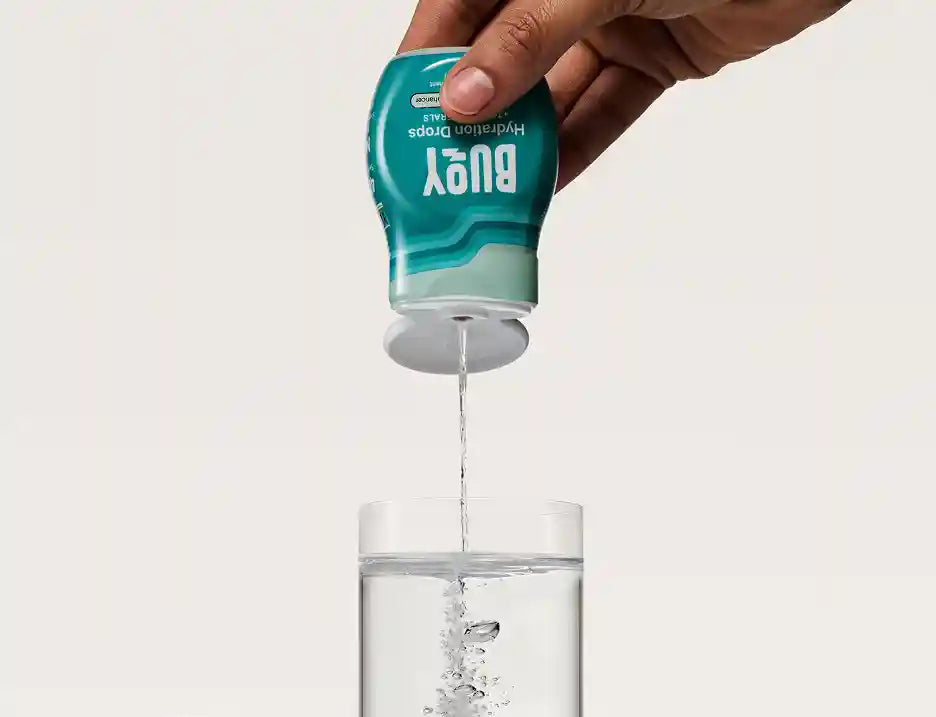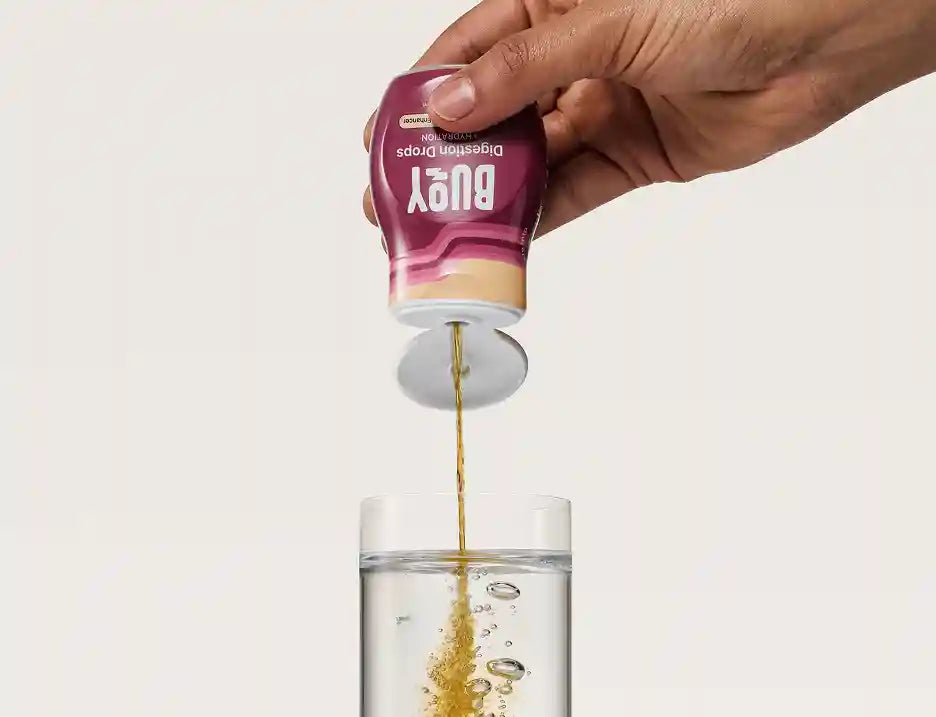
A Practical Guide to Lifestyle and Diet Changes for Managing POTS
Managing Postural Orthostatic Tachycardia Syndrome (POTS) can be tough, but practical lifestyle and diet changes can go a long way toward easing your symptoms and improving your quality of life.
POTS is a condition that affects your autonomic nervous system, which controls things like heart rate, blood pressure, and digestion. When you have POTS, your body has trouble regulating these functions properly, especially when you change positions like going from sitting to standing. This can lead to a range of symptoms, such as dizziness, fatigue, and rapid heartbeat that can make daily life a struggle.
Luckily, there’s some good news – there are plenty of practical steps you can take to manage your POTS symptoms and feel more in control of your health. Lifestyle and diet changes are an important part of any POTS management plan, along with medical treatment.
In this guide, we’ll explore some of the most effective lifestyle and diet strategies for living with POTS. From staying hydrated to practicing good posture, we’ve got you covered with quick and easy tips you can start using today.
We know that making changes to your daily routine can feel overwhelming, especially when you’re already dealing with the challenges of POTS. But trust us – small, consistent changes can add up to a big difference in how you feel.
Essential Takeaways:
- Optimizing Hydration and Diet for POTS Management: Managing POTS effectively involves staying well-hydrated and incorporating more salt to your diet. Aim for at least 2-3 liters of fluids every day and consider hydrating foods and electrolyte supplements. Adding small, frequent meals balanced with protein, healthy fats, and complex carbohydrates can help stabilize blood sugar and minimize symptoms.
- Incorporating Physical Activity and Stress Management: Regular physical activity, such as walking, swimming, or yoga, can help build cardiovascular fitness and improve POTS symptoms. Start slowly and gradually increase intensity. Managing stress through mindfulness, meditation, and engaging in fun activities can reduce the severity of your symptoms and enhance your overall quality of life.
So let’s dive in and find out how you can start optimizing your lifestyle and diet to thrive with POTS. Remember, you’re not alone in this journey – there’s a whole community of POTS warriors out there ready to support you every step of the way.
- Understanding POTS
- Practical Hydration Tips
- Incorporating More Salt into Your Diet
- Diet Changes for POTS Management
- Exercise and Physical Activity
- Managing Posture and Body Positioning
- Enhancing Sleep Quality
- Stress Management Techniques
- Practical Tips for Daily Living
Understanding POTS
Before we get into the practical tips, let’s take a quick moment to understand what POTS is all about. POTS stands for Postural Orthostatic Tachycardia Syndrome, which is a mouthful, but basically means that your body has trouble regulating your heart rate and blood pressure when you change positions, like going from sitting to standing (1).
Symptoms of POTS
This can lead to a host of symptoms that can make daily life a bit of a roller coaster. You might experience dizziness, lightheadedness, fatigue, headaches, or rapid heartbeat, especially when you stand up (1,2).
These symptoms can make it difficult to do everyday activities like working, studying, or even just running errands. Learn how to spot the symptoms of POTS in our guide, Recognizing the Symptoms of POTS.
Is POTS a Serious Condition?
You might be wondering if POTS is a serious condition, and the answer is, it can be. While POTS itself isn’t life-threatening, it can significantly impact your quality of life and make daily activities feel like an uphill battle.
POTS symptoms can range from mild to severe, and everyone’s experience is a little different. For some people, POTS is a minor inconvenience. But for others, it can be debilitating, making it hard to work, study, or even leave the house (2).
It’s important to remember that POTS is a real, physical condition – it’s not just in your head. The symptoms you’re experiencing are valid, and you deserve support and understanding.
Managing POTS Symptoms
While POTS can be frustrating, there’s a lot you can do to manage your symptoms and feel more in control. Lifestyle and diet changes are a big piece of the puzzle. By making some targeted adjustments to your daily routine and eating habits, you can help your body regulate itself better and minimize symptoms (2).
Strategies for Daily Life
Think of it like giving your body the tools it needs to function at its best. With the right support, you can start to feel more like yourself again and get back to doing the thing you love. So let’s start exploring some of those practical strategies!
Learn more about the basics of POTS with our informative guide: What is Postural Orthostatic Tachycardia Syndrome (POTS)?
Practical Hydration Tips
One of the most important things you can do to manage your POTS symptoms is to stay hydrated. When you’re dehydrated, your blood volume decreases, which can make your POTS symptoms worse. But staying on top of your fluid intake can help keep your symptoms in check and help you feel better overall.
So how can you make sure you’re getting enough fluids? Here are some easy tips:
- Carry a water bottle with you everywhere you go. Having water easily accessible will remind you to drink throughout the day.
- Set reminders on your phone to drink water at regular intervals. It’s easy to get caught up in your day and forget to hydrate, so reminders can be a big help.
- Include hydrating foods in your diet, such as cucumbers, watermelon, and soups. Eating your water can be just as effective as drinking it!
- Choose the right types of fluids. Water is always a great choice, but you can also try adding electrolytes to your favorite drinks or coconut water to help replace the salts your body needs.
How much should you be drinking? A good rule of thumb is to aim for at least 2-3 liters (67-101 ounces or approximately 8-12 cups) of fluids every day. But listen to your body – if you’re feeling thirsty or your POTS symptoms are acting up, you may need to drink even more (2).
Remember, hydration is key to managing POTS. By making it a priority and finding easy ways to incorporate it into your daily routine, you’ll be giving your body the support it needs to function at its best. And when you feel better, you can start to reclaim your life and do more of the things that bring you joy.
Incorporating More Salt into Your Diet
This might sound counterintuitive, but increasing your salt intake can actually be beneficial for managing POTS symptoms. When you have POTS, your body may have trouble retaining enough fluid, which can cause your blood volume to drop.
Salt helps your body hold onto fluid, which can improve your symptoms and make you feel better (2). But before you start shaking that salt shaker, let’s talk about some smart ways to add more salt to your diet:
- Salt your food. This one’s a no-brainer, but it’s an easy way to increase your salt intake. Don’t be afraid to add an extra pinch of salt to your meals, especially when cooking at home.
- Choose high-sodium snacks like pretzels, salted nuts, or pickles. These can be a tasty way to boost your salt intake between meals.
- Add salt to your beverages. If you’re struggling to get enough salt through food alone, try adding a pinch of salt to your water or other drinks.
- Make high-quality electrolyte supplements part of your daily routine. These products are specifically designed to help you replenish electrolytes and increase your salt intake in a convenient way. Simply add them to your water or any beverage for that matter for an extra boost (2,3).
The quality of salt you consume matters. That’s why when it comes to supplementing with salt to manage health conditions like POTS, you don’t want to increase your intake of table salt.

Not all types of salt are made equal: Buoy's Rescue Salt, harvested from the deep ocean, offers 87+ ionic trace minerals to help manage POTS symptoms by ensuring high-quality salt intake.
A Word of Caution
Now, a word of caution – it is possible to overdo it with salt. While increased salt can be helpful for POTS, you don’t want to go overboard. Too much salt can cause other health problems, so it’s all about finding balance.
A good amount to aim for is about 3-5 grams of salt per day, unless you have the hyperadrenergic subtype of POTS (learn about the different types of POTS here). But everyone’s needs are different, so work with your doctor to figure out the right amount for you. They can help you find that sweet spot where you’re getting enough salt to manage your symptoms without consuming too much (3).
Stay Hydrated
One more thing – when you’re increasing your salt intake, it’s important to make sure you’re staying hydrated. Salt and fluid balance go hand in hand, so make sure you’re drinking plenty of water and other hydrating fluids throughout the day.
Incorporating more salt into your diet can be a game-changer for managing POTS symptoms. By finding simple, tasty ways to boost your salt intake, you can give your body the support it needs to function at its best. Just remember to listen to your body, work with your doctor, and find the balance that works for you.
Diet Changes for POTS Management
In addition to increasing your salt and fluid intake, there are some other dietary changes that can help you manage your POTS symptoms. A well-planned POTS diet plan can be a powerful tool in managing symptoms and improving overall quality of life.
You want to focus on balanced, nutrient-dense meals that keep your blood sugar stable and help avoid triggering symptoms.
Eat Small, Frequent Meals
One helpful strategy is to eat small, frequent meals throughout the day instead of three large meals. This can help prevent blood sugar spikes and crashes that can worsen symptoms like fatigue and brain fog.
Balanced, Nutrient-Dense Meals
When it comes to what to include in those meals, aim for a balance of protein, healthy fats, and complex carbohydrates. Protein and fat can help keep you feeling full and stabilize your blood sugar, while complex carbs provide lasting energy. A balanced diet for POTS should include a variety of nutrient-dense foods to support overall health and well-being.
Foods and Drinks to Avoid
On the other hand, there are some foods and drinks that can trigger POTS symptoms in some people. These include high sugar foods, caffeine, and alcohol. Pay attention to how these affect you personally, and consider reducing or eliminating them if you notice they worsen your symptoms (2,3).
Exercise and Physical Activity
Exercise is another important way to manage POTS. While it may seem counterintuitive to exercise when you’re feeling fatigued, regular physical activity can actually help improve your symptoms over time by building cardiovascular fitness and increasing blood volume.
Choose the Right Types of Exercise
The key is to choose the right types of exercise and listen to your body. Low-impact aerobic exercises like walking, swimming, and cycling are often well-tolerated by POTS patients.
Strength training can also be beneficial for building muscle and improving circulation. Flexibility exercises like yoga and Pilates can help with balance, core strength, and stress management.
Start Slowly
When starting an exercise routine, it’s important to start slow and gradually increase intensity over time. Overexerting yourself can trigger symptoms, so it’s all about finding that sweet spot where you’re challenging yourself without overdoing it (2,4).

Regular physical activity, such as walking, can help manage POTS symptoms by improving cardiovascular fitness and increasing blood volume.
Managing Posture and Body Positioning
Posture and body positioning can have a big impact on POTS symptoms. Many people find that prolonged standing can trigger dizziness, lightheadedness, and fatigue.
Avoid Prolonged Standing
To manage this, try to avoid standing for long periods whenever possible. Use a stool or chair when you can and shift your weight and move around regularly when you do need to stand.
Elevate Your Legs
Elevating your legs can also help improve circulation and reduce pooling of blood in the lower body. Try using pillows to prop up your legs when sitting or lying down or take breaks throughout the day to elevate your legs above your heart.
Use Compression Garments
Compression garments can also be helpful for managing POTS symptoms. Compression stockings or sleeves apply gentle pressure to your legs and/or arms, which can help prevent blood from pooling and improve circulation. Just make sure to choose the right size and type for your needs and put them on correctly for maximum benefit (2,3).
Enhancing Sleep Quality
Getting good quality sleep is crucial for managing POTS symptoms. Poor sleep can worsen fatigue, brain fog, and other symptoms, so it’s important to prioritize sleep hygiene.
Sleep hygiene refers to the habits and practices that promote consistent, uninterrupted, and restorative sleep. It involves creating an environment and routine that supports your body’s natural sleep-wake cycle.
Establish a Regular Sleep Schedule
One important aspect of sleep hygiene is creating a regular sleep schedule. Try to go to bed and wake up at the same time every day, even on weekends. This helps regulate your body’s internal clock and can improve the quality of your sleep.
Create a Comfortable Sleep Environment
Creating a comfortable sleep environment is also important. Aim for a cool, dark, and quiet room. Invest in a supportive mattress and pillows and consider using earplugs or a white noise machine if needed.
Limit Screen Time
There are also some lifestyle changes that can improve sleep quality. Try to avoid screens like phones, tablets, and TV for at least an hour before bed, as the blue light can interfere with your body’s natural sleep-wake cycle. Instead, try relaxation techniques like deep breathing or meditation to help you unwind.
Adjust Evening Habits
Limiting caffeine and heavy meals in the evening can also help improve sleep quality. Aim to avoid caffeine after lunchtime and try to eat dinner at least a few hours before bed to give your body time to digest (2,3).
Stress Management Techniques
Stress is a common trigger for POTS symptoms, so finding effective ways to manage stress is an important part of any POTS management plan. When you’re stressed, your body releases hormones like adrenaline and cortisol that can increase heart rate and worsen symptoms (2).
Practice Mindfulness and Meditation
One helpful stress management technique is practicing mindfulness and meditation. This involves focusing on the present moment and observing your thoughts and feelings without judgment (5). There are many apps and online resources available to guide you through mindfulness exercises.

Studies show that mindfulness and meditation can help with the psychological effects of POTS, including stress and depression.
Engage in Enjoyable Activities
Engaging in hobbies and activities you enjoy can also be a great way to reduce stress and improve your overall quality of life. Whether it’s reading, crafting, or spending time in nature, make time for the things that bring your job and help you relax.
Seek Social Support
Finally, don’t underestimate the power of social support. Connecting with friends, family, or a support group of other POTS patients can provide a valuable source of encouragement, understanding, and practical advice (2,3).
Practical Tips for Daily Living
Managing POTS often means making some adjustments to your daily life. One important strategy is to organize your activities in a way that helps you manage your energy levels.
This might mean prioritizing tasks, setting realistic goals, and taking regular breaks throughout the day. Incorporating these strategies into your daily routine can help improve your POTS quality of life and make symptom management easier.
Pace Yourself
Pacing yourself is also important. Break larger tasks into smaller, more manageable steps, and listen to your body’s cues. If you’re feeling fatigued, take a break or switch to a less demanding activity.
Adapt Your Environment
Adapting your environment can also make a big difference in managing symptoms. If you struggle with dizziness or balance issues, consider using assistive devices like a shower chair or grab bars in the bathroom. If you work at a desk, invest in ergonomic furniture that supports good posture and minimizes strain on your body (3).
Find What Works for You
Remember, managing POTS is all about finding what works for you. It may take some trial and error to find the right combination of lifestyle changes and management strategies, but don’t give up.
With persistence and self-compassion, you can find ways to thrive with POTS and live your best life. Experimenting with different lifestyle changes and POTS diet plans can help you discover the best approach for enhancing your quality of life.
References:
- Zhao, S. & Tran, V.H. (Updated August 7, 2023). Postural Orthostatic Tachycardia Syndrome. Retrieved from https://www.ncbi.nlm.nih.gov/books/NBK541074/
- WebMD. (2023). What Is Postural Orthostatic Tachycardia Syndrome (POTS)? Retrieved from https://www.webmd.com/heart-disease/atrial-fibrillation/postural-orthostatic-tachycardia
- Dysautonomia International. (2019). Lifestyle Adaptations for POTS. Retrieved from https://www.dysautonomiainternational.org/page.php?ID=44
- Dysautonomia International. (2019). Exercises for Dysautonomia Patients. Retrieved from https://www.dysautonomiainternational.org/page.php?ID=43
- Raj, V., Opie, M., & Arnold, A. C. (2018). Cognitive and Psychological Issues in Postural Tachycardia Syndrome. Autonomic Neuroscience: Basic & Clinical, 215, 46–55. Retrieved from https://www.ncbi.nlm.nih.gov/pmc/articles/PMC6160364/




